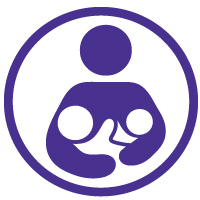
Human Milk Banking and Sharing Lecture Pack
The “Human Milk Banking and Sharing” add-on package features presentations with a focus on human milk components, milk banks and informal milk sharing. This is your opportunity to take an in depth look at the science, controversies, politics, policies and procedures surrounding providing human milk for human babies. Join speakers Aunchalee Palmquist, Naomi Bar-Yam, Marion Rice, Angela Bond, Anna Kotlinska and Briana Tillman and learn more about breast milk and the microbiome, the knowns and unknowns of human milk sharing, ethics and control over human milk and much more!
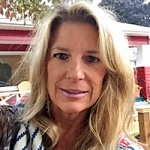

Dr. Rice has been working at the intersection of education and health for social justice and public good. She is the former Executive Director of the Breastfeeding Coalition of Oregon. Currently, Dr. Rice works on organizational development, communication, marketing, public policy and community engagement to advance health equity through access to donor human milk. A national thought leader, she is deeply engaged in convening conversations about the importance of maintaining women’s biological integrity, advancing feminist approaches to human milk banking and at the same time, encouraging capacity building for human milk derived therapies improving health outcomes for the most vulnerable babies.
Most recently Dr. Rice provided consulting as a Policy Associate with Mothers' Milk Bank of San Jose and has provided strategy and policy consulting for the Human Milk Banking Association of North America (HMBANA). Marion holds a doctorate in Education Leadership and is an Internationally Board Certified Lactation Consultant, IBCLC.
Objective 1: To discuss the commoditization of human milk through reproductive justice, biological integrity and equity frameworks
Objective 2: To examine ethical issues associated with corporations developing human milk products for sale to a wide variety of audiences
Objective 3: To explore commercial markets that may in fact have the unintended consequence of encouraging women to curtail or end breastfeeding prematurely
This session will look at how for profit corporations are seeking to aggregate, control and exploit human milk. In the absence of federal health policy and consumer regulation/protection, companies are emerging seeking to build commercial markets for human milk often under the guise of improving the economic status of women and infant health.
We will examine companies currently paying for milk both domestically and internationally and the implications for women and emerging policy both at the federal and state level.
Entities setting a price for human milk in the absence of supportive public policy may in fact undermine women’s biological integrity, infant health and contribute to the vulnerability of women and babies.
I will ask participants to consider the issues and to support models of community engagement and decision making that are women centered and women led that keep this biologically critical substance within the community from where it comes; supporting breastfeeding and benefiting women and babies.
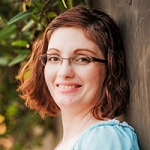

Dr. Bond is a trained laboratory and social scientist currently studying the social and public health impacts of shared human milk. Specific areas of interest include development of the microbiome of the infant, immunological responses from the parent and infant, impacts of non-parental human milk on development of the immune response and microbiome, and risk abatement practices by participants in private arrangement milk sharing. She has been specifically trained in health disparities sciences and engages in research with a perspective on social justice, gender equity, and health equity. As a Hawaiian and Cherokee heritage scholar, she has a particular passion for colonial impacts on infant care and feeding practices.
Objective 1: Differentiate between wet-nursing, cross-nursing, milk banking, milk sharing, and milk selling
Objective 2: Navigate the strengths and limitations of the current evidence regarding milk sharing
Objective 3: Objectively support families engaged in or considering PAMS in diverse settings
In the absence of adequate banked donor human milk for distribution to all infants in need, many families choose to engage in the practice of Private Arrangement Milk Sharing (PAMS), partially facilitated through social media, to procure human milk for their infants. Evidence regarding the participant and infant characteristics, and risk abatement practices is limited. This presentation explores the state-of-the-science of PAMS, characteristics of recipient participants and infants, donor screening practices, and risk abatement strategies. Results are contextualized with a socioecological framework of factors affecting infant feeding practices. Influence of health care providers, lactation support, birth attendant, and sources sought during decision making and the impact of these influences on supporting families are discussed.
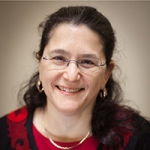

Naomi Bar-Yam, PhD, ACSW, has been working in maternal and child health for over 30 years as an educator, researcher, advocate, and writer. She is the immediate past president of the Human Milk Banking Association of North America (HMBANA) and the founding director of Mothers’ Milk Bank Northeast, which provides safe donor milk to hospitals and families throughout the northeastern US. An expert on access to perinatal health care and policies that support breastfeeding, she has been a consultant to the Centers for Disease Control (on a panel that created “The CDC Guide to Breastfeeding Interventions”), to the United States Breastfeeding Committee (developing an issue paper addressed to CEOs and legislators on breastfeeding and the workplace), and to the March of Dimes (developing educational material for women and families who are medically and socially vulnerable to high-risk pregnancy). She also developed a curriculum for hospital personnel about combining breastfeeding with their work. She reviews articles submitted to the Journal of Human Lactation, Breastfeeding Medicine, and other publications related to breastfeeding, milk banking, and access to perinatal child care. As Executive Director of Mothers’ Milk Bank Northeast, she is thoroughly versed in the technical, procedural, and ethical aspects of milk banking. She often speaks at professional conferences, hospital staff trainings, and grand rounds about milk banking and breastfeeding policies.
Topic: Ethical Concerns in Human Milk Exchange - [View Abstract]
Topic: Getting Milk to Babies: Social, medical, economic and commercial forces - [View Abstract]
Topic: The Whys and Hows of Using Banked Donor Milk - [View Abstract]
Objective 1: Discuss the history of breastfeeding, milk sharing and milk donation, particularly from the late 19th century to the present in western world
Objective 2: Understand milk kinship practiced in Islam and in large parts of the Far East and Middle East and its role in breastfeeding and milk sharing
Objective 3: Identify the medical/research, social, economic and commercial forces that influence the relationships among different ways to "get milk to babies"
Successful infant feeding is crucial to the survival of babies and the human race. Throughout history and across the world, societies have had to address alternatives to maternal breastfeeding. We will present an overview of the history of infant feeding, including the forces involved in the decline of breastfeeding and wet nursing and the rise of “scientific” infant feeding, commercial infant formulas and milk banking. We will also define and discuss milk kinship practiced in Islam and throughout the Far East and Middle East. We will cover as well the forces and organizations involved in the rise of breastfeeding, milk sharing, and milk banking over the last 2-3 decades, and the social, economic and commercial forces impacting infant feeding today. We will conclude with a discussion of how history can help us understand and influence future trends.
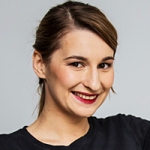

Anna has been working as a midwife since 2009. From the very beginning of her studies she has been fascinated with breastfeeding. During her studies for her Bachelor's and Master's degrees in Midwifery, her main area of interest was promotion and support for breastfeeding among women. Anna's interest in breastfeeding turned into a passion that led her to pursue the Polish Certification of Lactation Consultant and she is working toward certification as an IBCLC. She opened a private practice and a support group for local women in Krakow (cracko). Anna’s Interest and passion for lactation and breastfeeding have deepened during her current PhD studies. She is a PhD candidate in 2018 at University Medical College and is the coordinator of the Krakow Human Milk Bank.
Her scientific area of expertise: change in milk composition (macronutrients), human microbiota during pregnancy, lactation as well as tandem breastfeeding. Her research is carried out in the Department of Obstetrics and Perinatology. Anna is the author of many lectures and workshops for students of midwifery and medicine in area of breastfeeding, lactation and the variation of composition of human milk. Since 2016 she has been popularizing the science of human lactation in Poland and she is always finding new ways to promote and support breastfeeding women. In her spare time she practices meditation, yin yoga and is learning how to dance rock and roll.
Topic: Rusty Pipe Syndrome: A Case Report From Poland - [View Abstract]
Objective 1: Describe how works Human Milk Banks in Poland
Objective 2: Describe the relationship between breastfeeding and gut flora development and maintenance
Objective 3: List methods of recruitment and collaboration with donor mothers
Objective 4: Describe characteristics of the donor mothers and human milk
Although Human Milk Banks are already more than 100 years in the world in Poland they are pretty new and young institution. History of breast milk sharing is well known, in times of war in Polish women sell milk on food market. Today we have a professional Human Milk Banks with international standards and very engaged in scientific work. Human Milk Banks working as non-profit institution, but from this year 2017 our government will pay and support all hospitals in Poland which feed premature babies and full time newborns - human milk (biological mother or from Human Milk Bank). This presentation will show the history of our banks, inception steps, functioning, obtaining Donors Mothers, cooperation with non-governmental organizations and the national health service in Poland.
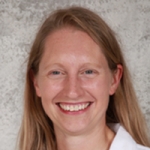

Briana Tillman received her undergraduate degree in International Relations from the United States Military Academy at West Point. She has been a La Leche League Leader for 9 years and is a board certified lactation consultant. After spending 10 years as a stay-at-home mom, she is currently attending medical school at Rocky Vista University College of Osteopathic Medicine in Parker, Colorado. She loves spending time with her husband and three elementary-school-aged children—as a family they like to play board games, go camping, and play bluegrass and chamber music.
Topic: Breast Milk and the Microbiome - [View Abstract]
Objective 1: Explore the term “microbiome” and its relationship to diet, vaginal birth, and environmental factors
Objective 2: Describe the relationship between breastfeeding and gut flora development and maintenance
Objective 3: Understand the theories surrounding the presence of bacteria in breast milk and their potential mechanisms of delivery
Objective 4: Discuss the impact of gut flora on allergies, obesity, brown fat, insulin resistance, and other long-term health outcomes
Recently, much scientific inquiry has turned to the new frontier of the “microbiome", the many microscopic beings living commensally or symbiotically in and upon the human body. Breast milk’s contribution to the development and sustenance of healthy gut bacteria is immense, in that it not only provides bacteria for the initial seeding, but also contains an ideal nutrient base designed to promote beneficial flora while simultaneously discouraging pathogens. This presentation will explore the relevant theories and understanding of these processes.
We will delve into the long-term health outcomes associated with the microbiome, including obesity, diabetes, brown-to-white fat ratio, gastrointestinal concerns, and allergies. This presentation will also explore the impact of breast milk storage and pasteurization techniques on its microbiologic activity. Additionally, we will look at other aspects of the microbiome as they relate to skin-to-skin contact, vaginal birth and breastfeeding.
Finally, we will describe bacterial roles in infant neurological development, allergies, digestion, immunity, and future obesity. Healthcare practitioners need to be aware of the benefits of microbial diversity in order to effectively counsel new parents, especially those with infants at risk for immunological or digestive concerns.
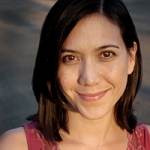

Aunchalee Palmquist is a medical anthropologist and International Board Certified Lactation Consultant (IBCLC). She completed postdoctoral studies at the National Institutes of Health and in the Global Health Initiative at Yale University. Palmquist is Assistant Professor of Anthropology and Director of the Program for Ethnographic Research and Community Studies at Elon University. Her recent research focuses on critical biocultural contexts of breastfeeding, human milk sharing, and infant and young child feeding in emergencies. She blogs at anthrolactology.com.
Objective 1: Describe various factors that shape maternal and infant perinatal health disparities globally
Objective 2: Describe emergency response practices that (i) reproduce health inequalities and (ii) support resilience to health inequalities
Objective 3: Use examples to illustrate the importance of breastfeeding and human milk equity in reducing maternal and infant health disparities following emergencies
Emergencies, whether natural disasters or complex humanitarian crises, often reproduce and exacerbate pre-existing health disparities. Mothers and infants within vulnerable, marginalized, and oppressed social groups are more likely to carry a disproportionate burden of perinatal morbidity and mortality resulting from emergencies as compared with those in privileged groups. Emergency response for pregnancy support, childbirth, and infant and young child feeding (IYCF-E) tends to address acute needs but often fails to support long-term and sustainable resilience to health inequalities and inequities. This presentation provides an overview of critical issues that influence social inequalities of perinatal maternal and infant nutrition in a global context, and then highlights the intersection with IYCF-E. A case studies approach will be used to illustrate key concepts. Although emergencies present numerous challenges to protecting maternal and infant health, they also avail unique opportunities to promote and support breastfeeding and human milk equity globally.
Accreditation
CERPs - Continuing Education Recognition Points GOLD Conferences has been designated as a Long Term Provider of CERPs by the IBLCE--Approval #CLT114-07. Approved for 6 CERPs (5L, 1E).
If you have already participated in this program, you are not eligible to receive additional credits for viewing it again. Please send us an email to [email protected] if you have any questions.Tags / Categories
(IBCLC) Education and Communication, (IBCLC) Ethical and Legal Issues, (IBCLC) Infant, (IBCLC) Maternal, (IBCLC) Psychology, Sociology, and Anthropology, (IBCLC) Public Health and Advocacy, Breastfeeding Advocacy, Breastfeeding in Emergencies, Ethics for Lactation Professionals, Human Donor Milk, Human Milk Banks, Inequalities & Breastfeeding, The Newborn Microbiome
How much time do I have to view the presentations?
- The viewing time will be specified for each product. When you purchase multiple items in your cart, the viewing time becomes CUMULATIVE. Ex. Lecture 1= 2 weeks and Lecture Pack 2 = 4 Weeks, you will have a total of 6 weeks viewing time for ALL the presentations made in that purchase.
- Time for viewing the talks begins once you purchase the product. For Live Webinars & Symposiums, the viewing period begins from when the live event takes place. Presentations can be accessed 24/7 and can be viewed as many times as you like during the viewing period.
What are bundled lectures?
- Presentations may be available individually or via a bundled package. Bundled lectures are a set of lectures that have been put together based on a specific category or topic. Some lectures will be available in both individual and lecture form, whereas others will be available only via a bundled lecture pack.
Will there be Handouts?
- YES! Each lecture comes with a PDF handout provided by the Speaker.
Some lectures include a Q&A, what does that mean?
- During our online conferences, presentations that occur live are also followed by a short 15 minute Question & Answer Session. The Speaker addresses questions that were posted by Delegates during the presentation. We include the recording of these Q&A Sessions as a bonus for you.
How can I receive a Certificate?
- If this presentation offers a certificate, once you are done viewing the lecture or the lectures within a bundle, submit your attendance record in order to be able to download your certificate. You'll be able to see which credits are offered for the lecture by hovering over the "Credits Available" link within the "Speakers & Topics" tab.
Professionals that selected this package also viewed

|
|

|








